#tyron: discourse.
Explore tagged Tumblr posts
Text
ㅤㅤ" what— no goodnight kiss for me? "
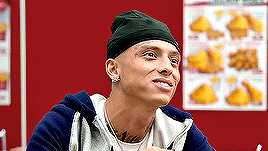
closed starter for @sturmboe, 1/2.
7 notes
·
View notes
Text
They Cloned Tyrone was a watered down Sorry to Bother You
Spoilers below the cut, if you haven't watched Sorry to Bother You, go watch it now
They Cloned Tyrone was Sorry to Bother You without the horse cock and the horse cock was essential the the message of the movie. It was still pretty fun but you should watch Sorry to Bother You, again, for the horse cock.
#sorry to bother you#they cloned tyrone#Horse cock discourse#movie discussion#thanks for coming to my ted talk#shitpost
0 notes
Note
Hi! I find your invincible posts interesting to think about. Good to know I’m not the only one constantly taken aback from all the ick in the comics (like I knew a comic from the early 2000s would’ve aged like milk but damm THAT bad?).
I wonder what your thoughts are of Marky (Anissa’s son) and his place in the story. I find him a little interesting as he later shows angst of his conception compared to Terra, but he’s also introduced so late in the comics’ runtime. Also genuinely insane how Kirkman had her name her son after the man she raped. Whether the implications were on purpose or not is beyond me.
to be honest, i don't find marky interesting at all. i can understand the conceptual appeal of an isolated young superhero wondering how much of his perception is a consequence of his conception—those are certainly real feelings that someone in marky's position could have—but in the context of the comic's discourse on the role of the wife and the mother, it ends up being bound up in ontologies.
i've spoken before about how the offscreen scott-anissa marriage does the double duty of reifying anti-black conceptions of there being this accepted place where black men may locate themselves, this man with a name entirely enclosed within assimilation (contrast to hero-turned-antagonist zandale and his evil brother tyrone—a white man wrote this shit for sure) who is small and soft spoken and suburban, and anissa, previously this short haired strong woman being made shorter, narrower, slimmer, even smaller chested, transformed from the soldier to the pearl-wearing suburban housewife. the 'redeemed' anissa is an anissa that entirely conforms to the ideology of the house, the family, and the woman's role therein. compare this too to eve, who after the viltrumite war is permanently reduced to mark's girlfriend, never capable of significantly contributing in the fight against the viltrumites, acting more as mother to terra and builder of the family's house. that is, if the good anissa and the laudable eve are each wrapped in these visual languages for patriarchal expectation for women's vantages in relation to men, then by its nature the bad anissa that marky gestures to is one outside of this schema.
the narrative is made further essentialist when you realize that marky's sister, molly, born out of genuine love, is excluded from development in the finale montage, is implied to have never received powers, and is never a point in marky's brief vignettes of characterization. the narrative simultaneously evokes anti-black language in how scott is treated as this curative induction into normativity, and misogynoir in molly's being completely excluded from heroism. the white (as anissa and mark are white in the comic) son born of rape is more significant to the narrative than the black daughter born of love.
not to mention that the narrative wields terra as this idealized linchpin for the family unit, especially in this racial context. where molly is excluded from this interlocution, terra is the focus. she's an adorable kid, she's certainly not at fault for anything in a watsonian sense, but she becomes a metonym for the strength of the family unit. even in the context of the rape plot, mark's brief, two page description of what took place and how he felt about it are cut short by the pull of the family, by eve literally walking away as he's talking to find that terra is having a medical scare. mark's feelings come up once more, in a single panel, a singular mention of his willingness to resume his contribution to the constructed marital expectation of intercourse and his subsequent return to kirkman-typical aggressive sexuality illustrating that he was done feeling those feelings. in that latter sequence, mark's role as the father comes up, too. terra is adorable, but it's hard to separate her from her reduction of mark and eve and how it frames assault as an aberrant force that occurs outside the presumed safety of the family
serious thought: i don't think the show will adapt marky. he only had character moments in one issue, the show has already created significant implicative language around anissa's role within the empire, not to mention that other lines have indicated the potential exploration of other half viltrumite kids. even the z-list nerd journalism websites i lampoon so often have pointed out how conspicuous the first half of season two is in implying to there being other viltrumite kids besides mark and oliver (allen even saying it). the potential for jealousy is stronger if it's mark at the other end, who comes from this world of superheroes, thereby having access to a language that allows him to resist the empire, and having a father whose proximity to this language ultimately turned him to the side of good
joke thought: i don't think anybody at skybound's gonna wanna figure out what a mixed brown/white/asian child looks like. the art style starts sputtering and gasping drawing any ol poc.
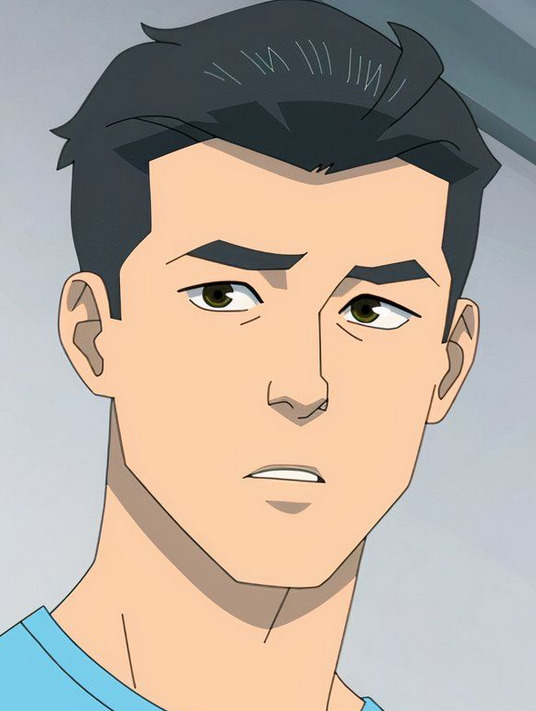

#eyeballplanets answers#invincible#thank you for the ask! im glad i had an excuse to talk about this LOL.
5 notes
·
View notes
Note
Personally, I've kinda noticed a trend where some people assume every character who experiences a form of discrimination is black-coded if they're not human or should've been black if they are human
And it feels like a double-edged sword in a way
Where is the line between wanting to properly discuss anti-black discrimination, restricting black characters to only that side of their experiences, and the idea that kind of plotline only applies to a specific group?
I have not seen this myself, so apologies in advance if I get assumptions wrong.
I wanna give the benefit of the doubt to people most of the time and think that they're not being serious, but there's consistently a type of person who this reminds me of: good intentions, but online too often, not mature or socially savvy enough to understand the type of nuance in these conversations, secretly entertained by any and all discourse they are privy too, and-as a result of the previous points-has issues that they need to talk to a therapist who specializes in navigating the world through a racialized lens (or an "ally" lens if the person in question doesn't experience said racial discrimination applicable to the situation/discourse they are involved in).
The best answer I can give for how to respond as an individual is, depending on how volatile/open to conversation the person is, to have civil discussion or let the matter go.
Popular posts on social media get popular because social media, for some people, serves as "bite sized" news, research, or societal topics, thereby ripping away a lot of damn nuance from important conversations.
That's how you get situations like you described. "Should we discuss anti-black discrimination in media?" "Yes!" "Well this character-who we do not know is actually black-has similarly coded pain to black people so they must be black" "...Well, no. Not necessarily. Let's talk about this more so we can discuss why I disagree."
That last part is something many people are EXTREMELY adverse to doing, and unfortunately it's in part with how lots of social media presence involves constant policing and "stakeouts" of any and all slip ups-even minor ones-to the point where there's little to no wiggle room with even asking questions like this in the first place i.e. the ask you sent me, which I myself appreciate, but I can think of many accounts on various sites who'd react to even asking about this stuff as something to mock or bitterly toss away.
Throwing my hat into the topic itself:
The line of discussion is not easily found and shifts constantly depending on the media itself (context of the story, when the thing was made, who made it, why was it made, who was it made for, why is it popular for people to ascribe certain identities to this, etc.) so there will always be grounds to talk about it. It's just that, as I said, people don't wanna fucking even entertain the idea of talking/discussing things like a normal person anymore.
Further on, IMO, Black people are very much not the only racialized group who have known suffering, and to base character headcanon/interpretation on that suffering itself leans into behavior that's very ignorant, for lack of better words. At that point, the person who says "X character is Black because they have this pain experience" and that's the only reason? It's a big yikes and, again, they should really talk to a professional in order to unlearn that, even if it comes from a good place. Defining a group of people by just the bad shit that's happened to them is very dehumanizing to other people.
After all, there's plenty of non-black characters who are very more easily coded as black in ways that aren't pain and suffering, though the main examples I can think of are cartoons lol. Uniqua and Tyrone from Backyardigans, Will from Foster's Home, Darwin from Gumball, and Garnet from Steven Universe. All of those characters have unrelenting positivity and none of them are really defined by constant pain/tragedy. There's more to Black people, and humans in general, than bad shit we've been through lol.
9 notes
·
View notes
Note
hi you're European right? I'm curious to know your thoughts about how the American south is portrayed in true detective bc I've been there and yes it's exactly like that but even moreso. Haunted ass beautiful country
Thank You So Much for such an interesting ask!
In the case of many europeans who were born before the Internet was such a big thing, we mostly learned about the us from films and shows. my childhood experience was watching reruns of spaghetti westerns and early 2000s rom coms, family comedies and kids movies, and feeling that the technicolor reality of america was somehow so much better than the Gray of eastern europe. the discrepancy isn't as noticeable now as it used to be when i was a kid, but you could Smell the post-sovietness some days. the life i saw in the movies was anything But the bleak, overwhelming reality of the early 2000s in my country that just made you feel nauseous and gave you a migraine. like i remember being Shocked at the technology of CDs and MP3 players. it was 2007.
the consensus was always that america was somewhere where everything was better. bigger. brighter. america was where you went to be happy. where you could breathe.
then, as i grew up, i obviously realized that this was a load of bullshit. i don't remember when the shift took place, but sometime in my teenage years, i suppose. by that time, my english has gotten good enough to actually participate in social media (that are predominantly american, like tumblr for example. i've been here for a decade) and actually engage in discourse. to learn about the Real america and what life looked like for the average person. and it wasn't great. guns, systemic oppression, privatized healthcare, the capitalist rot. none of that was present in the movies of my childhood.
now, in true detective, the south reminds me so much of how eastern europe felt in my childhood. it's nowhere near similar to it visually, the nature and architecture and people are all different, but it is Stifling, Suffocating, like the sky is gonna come down on your head. the ash and aluminum line actually describes it so good. what i was most surprised by, though, was the people. starting from marty (let's not focus on rusty here as we can all agree he doesn't really belong with the rest of the characters), he is a perfect example of the average family man. i love his character Because he's a shit and a cringeass loser, but in the scenes of him interacting with his daughters in '02, the feeling that he evokes in me is Disgust. and i feel like that's a common archetype of the father-provider that thinks his role in the house ends with making money. he sits in his chair, makes everybody miserable with his very presence, and expects the food to be brought to him. that man has never scrubbed a toilet in his life. i know men like him. i've met them, talked to them. i'm related to them. they're everywhere. that disgust feels intimate. now, the other characters that surprised me were the side characters, the people rust and marty go to question. tyrone's mother, the prostitutes, dora's friend at the scrap yard - they remind me of my people. now, i really don't want to come off as classist or some shit like that - but in both the show And my reality, the divide between the working class and the educated crowd is Stark. that is not to say that one is better than the other (i firmly believe that a lack of education can make you happier, if you think about it. content with a simple life, happy to work in a mine your whole life, live in a wielka płyta apartment and go to the sea once a year. if that. this is very specific to my region, sorry). the way those side characters talk, behave, even look - that is Nothing like the movies. they're not the flashy main characters, they're imperfect in every sense - they Look like people, have flaws, crooked teeth, they don't dress like supermodels, they can be stupid, they drink and smoke and cheat and lie. they're Human, not movie protagonists. and i love that reality in the show. makes it feel that much more authentic.
i don't know how specific that is to the south; are the people like that in other places? are the fishermen in luisiana the same as in minessota? is the suffocating feeling specific to the iberia parish, or is that just how it is in small town america? i dont know. the problem is, i wanna find out.
see, i never lost that childhood wonder. call me naive, but i still wanna Go. i still want to see the american dream with my own two eyes, even if it means i'm gonna watch it shatter in real time. i graduate college in a little over a year with a masters degree, and for right now my plan is to find a way to go work at a ranch in montana or wyoming. that's all i want. my favorite thing about america is not the culture, not the people, not the Possibility, but the Space. ironically, the stolen land is what compels me most. i want to experience that open space, to Breathe, and for the first time in my life feel my lungs filling up fully. i will be disappointed, full stop, but i want to have that experience.
the american south is a fascinating place to me, always has. the specific mix of cultures, the tradition and lack of it, even the bigotry and hate, it's all endlessly interesting. as you said, haunted but oh so beautiful. it scares the shit out of me. i need to go and feel it bite me.
#sorry for going off like that lmao#but yeah. thats them thoughts#if you wanna talk about it more PLEASE LEAVE ME ANOTHER ASK/RESPOND TO THIS/DM ME#thank you again for this ask#love you mwah mwah mwah#ask#true detective
8 notes
·
View notes
Text
Understanding the Term "Roman Catholic" | Origin, Usage, and Criticisms

Roman Catholic
The term "Roman Catholic" is often used in official documents to describe members of the Catholic Church, as a way of recognizing those who reject the authority of the Church. Some Anglicans view the Catholic Church as consisting of three main branches: Roman, Anglo, and Greek. However, this view has been shown to be incorrect. For more information on the term "Catholic", please refer to the articles on "church" and "Catholic".
Definition
The "Oxford English Dictionary" defines "Roman Catholic" as follows.
“The use of this composite term in place of the simple Roman, Romanist, or Romish; which had acquired an invidious sense, appears to have arisen in the early years of the seventeenth century. For conciliatory reasons it was employed in the negotiations connected with the Spanish Match (1618-1624) and appears in formal documents relating to this printed by Rushworth (I, 85-89). After that date it was generally adopted as a non-controversial term and has long been the recognized legal and official designation, though in ordinary use Catholic alone is very frequently employed. (New Oxford Dict., VIII, 766)”
Illustrative quotations follow. The earliest is from Edwin Sandys' "Europae Speculum" of 1605: "Some Roman Catholics won't say grace when a Protestant is present." Day's "Festivals" of 1615 contrasts "Roman Catholics" with "good, true Catholics.”
Origin of the Term
The Oxford Dictionary's account of the origin of the term "Roman Catholic" is not entirely satisfactory. The term is actually much older than believed, dating back to the 16th century when English Catholics under persecution defended the lawfulness of attending Protestant services. In response, Protestant divines, such as Father Persons and Robert Crowley, used the term "Roman Catholic" or "Romish Catholic" in their writings. They resented the Roman Catholic Church's claim to the term "Catholic" and insisted that the Reformers were the true Catholic Church. The term "Roman Catholic" originated from this Protestant view, and was used to qualify the term "Catholic" when referring to their opponents. Crowley even referred to his opponents as "Protestant Catholics.”
On the other hand the evidence seems to show that the Catholics of the reign of Elizabeth and James I were by no means willing to admit any other designation for themselves than the unqualified name Catholic. Father Southwell's "Humble Supplication to her Majesty" (1591), though criticized by some as over-adulatory in tone, always uses the simple word. What is more surprising, the same may be said of various addresses to the Crown drafted under the inspiration of the "Appellant" clergy, who were suspected by their opponents of subservience to the government and of minimizing in matters of dogma. This feature is very conspicuous, to take a single example, in "the Protestation of allegiance" drawn up by thirteen missioners, 31 Jan., 1603, in which they renounce all thought of "restoring the Catholic religion by the sword", profess their willingness "to persuade all Catholics to do the same" and conclude by declaring themselves ready on the one hand "to spend their blood in the defence of her Majesty" but on the other "rather to lose their lives than infringe the lawful authority of Christ's Catholic Church" (Tierney-Dodd, III, p. cxc). We find similar language used in Ireland in the negotiations carried on by Tyrone in behalf of his Catholic countrymen. Certain apparent exceptions to this uniformity of practice can be readily explained. To begin with we do find that Catholics not unfrequently use the inverted form of the name "Roman Catholic" and speak of the "Catholic Roman faith" or religion. An early example is to be found in a little controversial tract of 1575 called "a Notable Discourse" where we read for example that the heretics of old "preached that the Pope was Antichriste, shewing themselves verye eloquent in detracting and rayling against the Catholique Romane Church" (p. 64). But this was simply a translation of the phraseology common both in Latin and in the Romance languages "Ecclesia Catholica Romana," or in French "l'Église catholique romaine". It was felt that this inverted form contained no hint of the Protestant contention that the old religion was a spurious variety of true Catholicism or at best the Roman species of a wider genus. Again, when we find Father Persons (e.g. in his "Three Conversions," III, 408) using the term "Roman Catholic", the context shows that he is only adopting the name for the moment as conveniently embodying the contention of his adversaries.
Usage
In a passage from an examination in 1591 (see Cal. State Papers, Dom. Eliz., add., vol. XXXII, p. 322), a deponent was "persuaded to conform to the Roman Catholic faith." However, it's unclear if these are the exact words of the person in question or if they were said to please the examiners. The "Oxford Dictionary" suggests that "Roman Catholic" became the official label for English Papacy supporters during negotiations for the Spanish Match from 1618-24. The religion of the Spanish princess was often referred to as "Roman Catholic" in the various treaties and proposals for this match. Before this period, Catholics were commonly referred to as Papists or Recusants, and their religion was described as popish, Romanish, or Romanist in Acts of Parliament and proclamations. Even after "Roman Catholic" became the official term, it was still used condescendingly. Catholics began to use the term themselves to encourage a friendlier relationship with the authorities, as seen in the "Humble Remonstrance, Acknowledgement, Protestation and Petition of the Roman Catholic Clergy of Ireland" in 1661. The same practice was observed in Maryland. The wish to appease hostile opinions grew greater as Catholic Emancipation became a practical political issue, and by then, Catholics used the qualified term even in their domestic discussions. In 1794, the "Roman Catholic Meeting" was formed to counteract the unorthodox tendencies of the Cisalpine Club, with the approval of the vicars Apostolic. The Irish bishops referred to members of their own communion as "Roman Catholics" during a meeting in 1821. Even Charles Butler, a representative Catholic, used the term "roman-catholic" in his "Historical Memoirs.”
In the mid-19th century, a strong revival of Catholicism led many converts to insist that the name "Catholic" be used without qualification. However, the government refused to allow any changes to the official designation, and even on public occasions, addresses presented to the Sovereign had to use the term "Roman Catholic Archbishop and Bishops in England". Despite attempts to use alternative phrasing, such as "the Cardinal Archbishop and Bishops of the Catholic and Roman Church in England", these were not approved. In 1901, the requirements of the Home Secretary were complied with when the Catholic episcopate presented addresses using the term "Roman Catholics". Cardinal Vaughan explained that this term had two meanings: one that was repudiated and another that was accepted. The term "Roman" is not meant to restrict the Church to a particular species or section, but rather to emphasize its unity and its connection to the Roman See of St. Peter.
Criticisms
Representative Anglican Bishop Andrewes ridiculed the phrase "Ecclesia Catholica Romana" as a contradiction in terms. Catholics make no compromise in the matter of their name as it is the traditional name handed down to them from the time of St. Augustine. Anglicans' dog-in-the-manger policy is brought out in a correspondence on this subject in the London "Saturday Review" (Dec., 1908 to March, 1909).
Source
Catholic Encyclopedia (https://www.newadvent.org/cathen/13121a.htm)
2 notes
·
View notes
Text
Reflecting On Life Before And After The Benghazi Attacks With Benghazi Hero Kris "Tanto" Paronto | Episode 325
It’s been 12 years since the Benghazi Attacks that claimed the lives of U.S. Ambassador Christopher Stevens, IT Sean Smith, and GRS members Tyrone Woods, and Glen Doherty. While the discourse on this subject remains highly political on both sides, the enemy remains out there. Joining me is Benghazi hero, survivor Kris “Tanto” Paronto. In this wide-ranging interview, we reflect on life before and…
0 notes
Text
SDL - Curators of Pohewa Pahewa Exhibition

Desna Whaana-Schollum
Desna Whaanga-Schollum (nō Rongomaiwahine, Ngāti Kahungunu, Pāhauwera) is Co-Chair of Māori and Indigenous design network Ngā Aho. Desna’s work is connected through the exploration and articulation of cultural identity. Projects see her collaborating with a wide variety of communities, business and design professionals, artists and academics to achieve results which effect change in people, practice and place. Desna is actively involved in Māori identity design, discourse and stakeholder engagement in Aotearoa, via design consultancy, research, exhibitions, wānanga, speaking engagements and governance roles.
Tyrone Ohia
Tyrone Ohia was born in Tauranga, raised in Whanganui, and is founder and creative director of Extended Whānau – an award winning design studio based in Tāmaki Makaurau.
Driven by visual storytelling, the studio works on a wide range of projects, with a wide range of collaborators, with the aim of elevating and promoting all aspects of te ao Māori through design.
Graham Tipene
Johnson Witehira
Zoe Black
0 notes
Text
SDL: Pohewa Pāhewa: a Māori design kaupapa
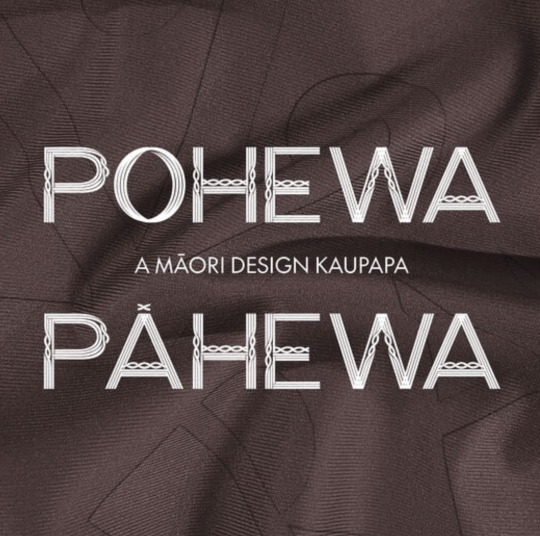
Desna Whaanga-Schollum

MĀTAURANGA MĀORI / SCIENCE COMMUNICATION / INDIGENOUS DESIGN & ART
The way Desna's work approaches and discusses national identity ties it together. She works on projects with people from many different communities, business and design professionals, artists, and academics to get results that improve people, practises, and places. Desna is involved in Mori identity design, discourse, and stakeholder involvement in Aotearoa through design consulting, study, exhibitions, wnanga, speaking engagements, and governance roles.
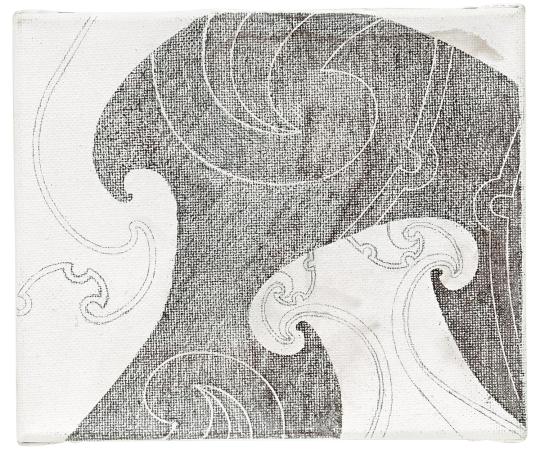
Tyrone Ohia

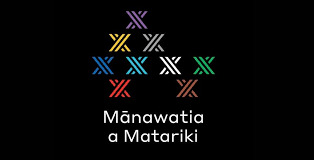
Tyrone Ohia is a designer working out of Tmaki Makaurau. He is of the Ngti Pkenga and Ngi Te Rangi iwi. He grew up in Whanganui but was born in Tauranga, and now he runs the award-winning design business Extended Whnau out of Tmaki Makaurau. The studio is motivated by the desire to elevate and promote all parts of Te Ao Mori through design and, as such, works on a wide variety of projects with a wide variety of collaborators.
Graham Tipene

“I grew up in Auckland at a time when the only place to see Māori representation in art was in the museum or the statue in downtown,” he says, referring to Molly Macalister’s 1967 bronze sculpture A Māori Figure in a Kaitaka Cloak. "I thought it wasn’t good enough and we needed to do better for our kids who don’t see themselves in their environment.”
Graham Tipene's art can be seen all over Tmaki Makaurau, from the impressive concrete panels in the Waterview Tunnel and the beautiful Tirohanga Whnui walking and cycle bridge in Albany to the Central City Library and the Te Ao Mrama (South Atrium) at the Auckland War Memorial Museum Tmaki Paenga Hira.
The carving behind him shows Kane Nepu Paora, the grandmother, and Mere Paea Tipene, the granddaughter, coming together in a hongi. This shows the tuakana-teina bond between the two women.
Below them are two manaia who live in the water on either side of the Tmaki Isthmus. Their names are Kaiwhare and Horotiu. They show an old, intangible link between each river and the value of the two waterways for getting from east to west. They are guardians, or kaitiaki, who keep us safe and help us understand their job through stories.
Johnson Witehira
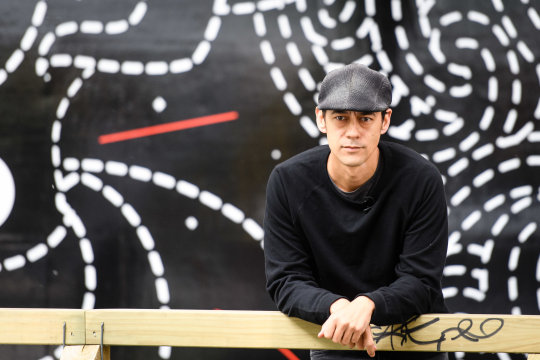
Johnson Witehira is of Tamahaki and Ngi T-te-auru origin. He is an artist, a designer, and a professor. He helped start both Waahi Wairua and Indigenous Design and Innovation Aotearoa (IDIA).
Since he got his PhD in Mori Visual Art in 2013, Johnson has been on a journey to bring Mori culture into every part of life in New Zealand. He was responsible for developing Mori designs for the Auckland City Council, TVNZ, the Auckland International Airport, and Waka Kotahi, the New Zealand Transport Authority. Other essential design projects include making the first set of Mori alphabet blocks, co-designing the PAKU gardening tools for kids, and making the first usable Mori-specific typeface.
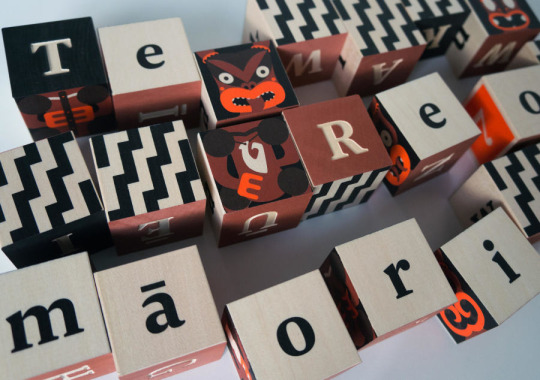
Zoe Black
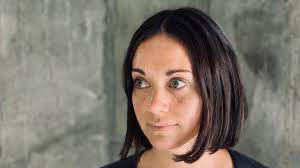
Zoe Black is the deputy head of Objectspace in Auckland, Aotearoa, New Zealand. She is Ngpuhi, Ngti Hine, and Pkeh. Since 2008, she has been working in art spaces. Her organising work has been mostly about building up communities and speaking up for craft and object art forms that don't get enough attention. She is the director in residence at Norwegian Crafts (2020–2022), where she works on projects that bring together the ways that Indigenous people in Aotearoa and S��pmi make things. Zoe Black helped put together the Embodied Knowledge issue of The Vessel, which was the third issue.

0 notes
Text
ㅤㅤcoming back felt weird, it felt different. newfound fame put aside, something else felt different; like something, no, someone was missing. it was to be expected when he'd spent so long on the road, running from feelings he'd never dared mutter out loud. but now he was home, he had nowhere else to run — and he could only hope that she hadn't changed her number, or, worse yet, blocked his.
[ tyron @ 23:54pm ] : yoooo it's ty [ tyron @ 23:54pm ] : wys? tryna link [ tyron @ 23:55pm ] : i think i owe u an apology or some shit
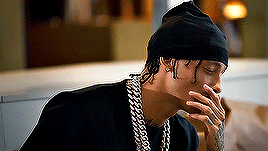
closed starter for @unraptures, based on.
#tyron: discourse.#unraptures#i hope this is okay!!#he's not in a band but ive always wanted to do a drill rapper verse for him heheheh#and he's got maaaajor commitment issues!! n the baby plot seems so fun n cuuuute!!#i was thinking mayb for jasmine or jessica or olive mayb ?? < 3
7 notes
·
View notes
Text
Week 2 SDL

----------------------------------
Pohewa Pāhewa: a Māori design kaupapa
| Desna Whaanga-Schollum

Desna is actively involved in Māori identity design, discourse and stakeholder engagement in Aotearoa, via design consultancy, research, exhibitions, wānanga, speaking engagements and governance roles.
| Tyrone Ohia

He was born in Tauranga, raised in Whanganui, and is founder and creative director of Extended Whānau – an award winning design studio based in Tāmaki Makaurau.
| Graham Tipene

Graham is a Tā Moko artist who has been involved as a consultant and key artist on civic and Council-led projects throughout Tāmaki Makaurau Auckland. His public work brings Māori kaupapa into the built environment of the city, with major projects including the Waterview tunnel, Victoria Park, Auckland Library, and Tirohanga Whānui Bridge in Albany.
| Johnson Witehira
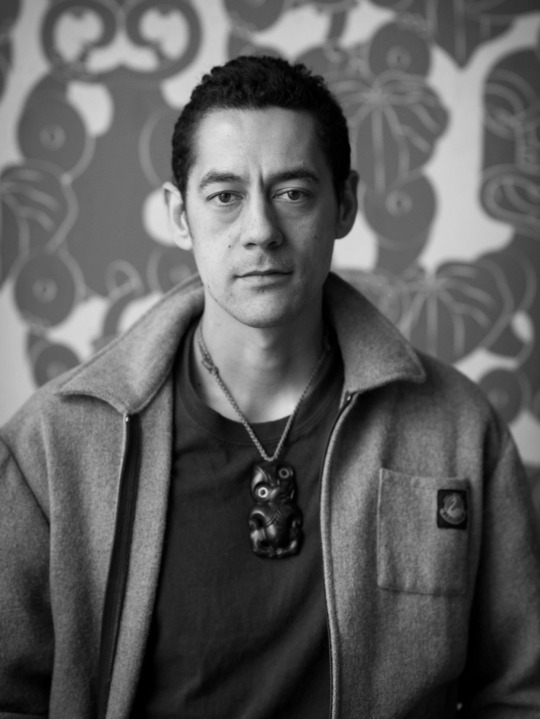
Johnson Witehira is an artist, designer and academic of Tamahaki and Ngāi Tū-te-auru descent. He is the co-founder of both Indigenous Design and Innovation Aotearoa (IDIA) and Waahi Wairua.
| Zoe Black

Zoe Black (Ngāpuhi, Ngāti Hine, Pākehā) is the deputy director of Objectspace in Auckland, Aotearoa New Zealand. She has been working in galleries for the past eight years. Her curatorial practice has focused on community development and advocating for critically under-represented craft and object art forms.
0 notes
Text
OBJECTSPACE “POHEWA PĀHEWA” CURATORS


Desna Whaanga-Schollum
Her work connects through the exploration and articulation of cultural identity. Collaborating with a wide variety of communities, businesses, and design professionals, artists and academics to achieve results which affect change in people, practice, and place. Desna actively involves in international indigenous discourse, stakeholder engagement, and Māori Identity design.
Tyrone Ohia
Tyrone Ohia (Ngāti Pukenga, Ngāi te Rangi) is the Creative Director and Founder of Extended Whānau in Auckland.


Graham Tipene
Graham Tipene is a Tā Moko artist who has been involved as a consultant and key artist on civic and Council-led projects throughout Tāmaki Makaurau Auckland. His public work brings Māori kaupapa into the built environment of the city, with major projects including the Waterview tunnel, Victoria Park, Auckland Library, and Tirohanga Whānui Bridge in Albany.


Johnson Witehira
Johnson is an artist, designer and researcher of Māori and Pākehā (British descent). He’s been on a journey into Māori art and design since completing my Masters in Graphic Design (2007) and then my Doctorate in Māori visual arts (2013). Spending most of my time thinking about how Māori, did things in the past, and how they might apply our mātauranga (knowledge) to contemporary problems. His thoughts and writings on Māori design have been published in some of the worlds leading academic journals and books including; Visible Language (University of Cincinnati), The Graphic Design Reader (Bloomsbury), AIGA Eye on Design (US), Novum (Munich) and Monocle (London).


Zoe Black
Zoe Black is the deputy director of Objectspace in Auckland, Aotearoa New Zealand. She has been working in galleries for the past eight years. Her curatorial practice has focused on community development and advocating for critically under-represented craft and object art forms. She is Norwegian Crafts' curator in residence (2020–2022), working on projects that create a dialogue between Indigenous making practices in Aotearoa and Sápmi. Zoe Black was co-editor of the third issue of The Vessel titled Embodied Knowledge.
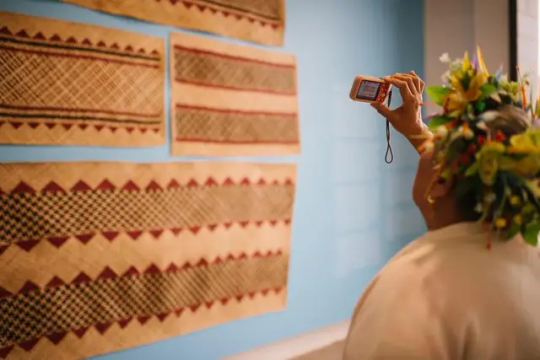

0 notes
Text
W02 SDL | Pohewa Pāhewa Curators
Desna Whaanga-Schollum
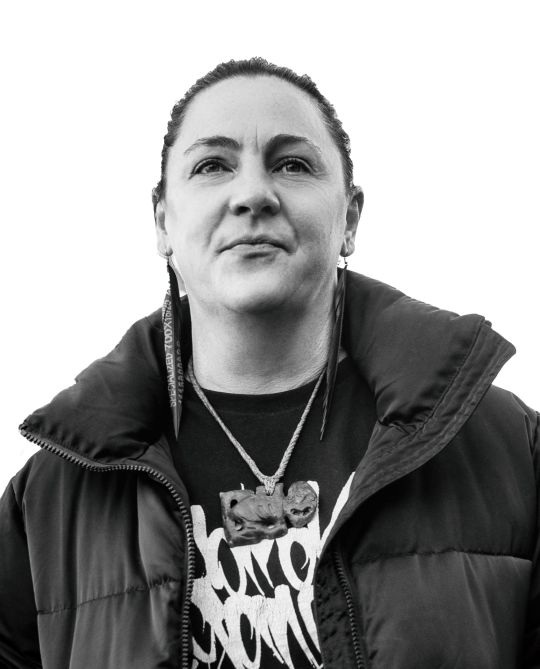
“Desna’s work is connected through the exploration and articulation of cultural identity. Projects see her collaborating with a wide variety of communities, business and design professionals, artists and academics to achieve results which effect change in people, practice and place. Desna is actively involved in Māori identity design, discourse and stakeholder engagement in Aotearoa, via design consultancy, research, exhibitions, wānanga, speaking engagements and governance roles.” https://ngaaho.maori.nz/steering-committee-profile.php?mid=8&ac=srch&m=29
Tyrone Ohia
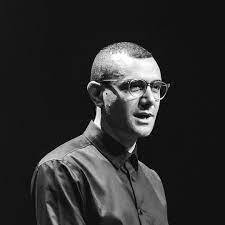
“Tyrone Ohia (Ngāti Pūkenga, Ngāi Te Rangi) is a designer based in Tāmaki Makaurau. He was born in Tauranga, raised in Whanganui, and is founder and creative director of Extended Whānau – an award winning design studio based in Tāmaki Makaurau. Driven by visual storytelling, the studio works on a wide range of projects, with a wide range of collaborators, with the aim of elevating and promoting all aspects of te ao Māori through design;” https://www.ramp.ac.nz/speakers-and-events/tyrone-ohia/
Graham Tipene
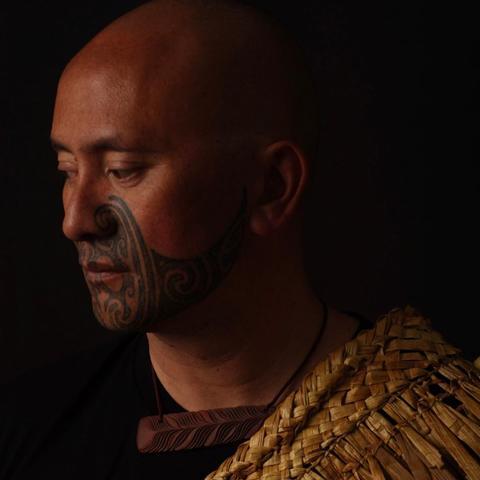
“Graham Tipene’s artwork can be found across Tāmaki Makaurau, from the impressive concrete panels in the Waterview Tunnel and Albany’s stunning Tirohanga Whānui walking and cycling bridge, to the Central City Library and Te Ao Mārama (South Atrium) at Auckland War Memorial Museum Tāmaki Paenga Hira. Tipene (Ngāti Whātua, Ngāti Kahu, Ngāti Hine, Ngāti Haua, Ngāti Manu) is one of the most in-demand artists and consultants for projects that ensure te ao Māori is an intrinsic part of the urban landscape.” https://ourauckland.aucklandcouncil.govt.nz/news/2022/08/people-of-midtown-artist-graham-tipene/
Johnson Witehira
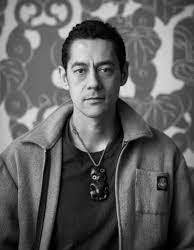
“Johnson Witehira is an artist, designer and academic of Tamahaki and Ngāi Tū-te-auru descent. He is the co-founder of both Indigenous Design and Innovation Aotearoa (IDIA) and Waahi Wairua.Since completing his doctorate in Māori Visual Art (2013), Johnson has been on a mission to bring Māori culture into all aspects of New Zealand life. He has led the development of Māori design for some of New Zealand's most prominent organisations: The Auckland City Council, TVNZ, The Auckland International Airport, and Waka Kotahi (The New Zealand Transport Authority). Other significant design projects include developing the first set of Māori alphabet blocks, co-designing the PAKU gardening tools for children and developing the first functional Māori-specific typeface.” https://semipermanent.com/profiles/johnson-witehira
Zoe Black
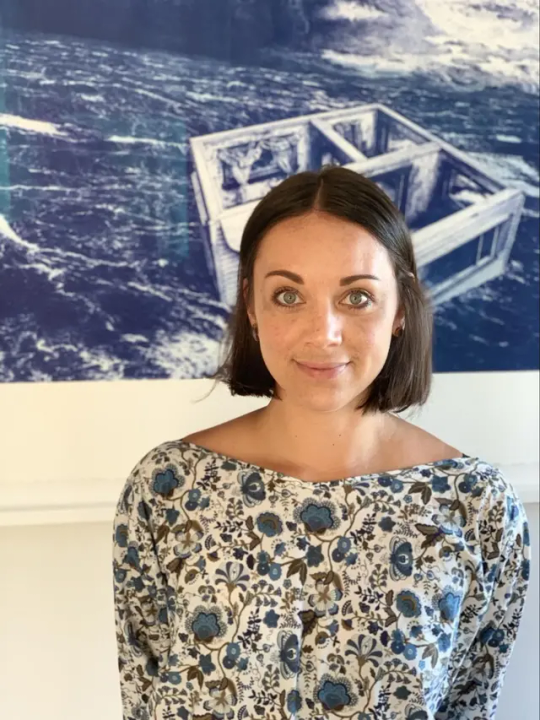
“Zoe Black (Ngāpuhi, Ngāti Hine, Pākehā) is the deputy director of Objectspace in Auckland, Aotearoa New Zealand. She has been working in galleries for the past eight years. Her curatorial practice has focused on community development and advocating for critically under-represented craft and object art forms. She is Norwegian Crafts' curator in residence (2020–2022), working on projects that create a dialogue between Indigenous making practices in Aotearoa and Sápmi. Zoe Black was co-editor of the third issue of The Vessel titled Embodied Knowledge.” https://vessel-magazine.no/contributors/zoe-black
0 notes
Text
SDL: Pohewa Pāhewa: a Māori Design Kaupapa
Finding out about the curators: Desna Whaanga-Schollum, Tyrone Ohia, Graham Tipene, Johnson Witehira and Zoe Black

Desna Whaanga-Schollum
Whaanga-Schollum is the chair of the board for Artspace Aotearoa. She grew up with writer, historian, illustration and research Mere Whaanga (mother). Whaanga-Schollum collaborates with a wide group of business proffesionals, artists and academics to result an effect of change in people, practice and place. She actively participates in Māori identity design, discourse and stakeholder engagement in Aotearoa. Whaanga-Schollum is now a chair of the board for Nga Aho - a national network of Māori design professionals who come together to support each other
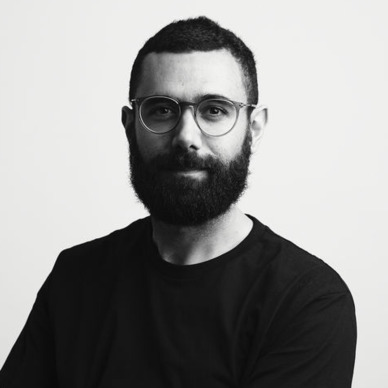
Tyrone Ohia
Ohia is the Creative Director and Founder of Extended Whānau in Tāmaki Makaurau. He graduated from UCOL in Whanganui with Computer Graphic Design. He moved to Japan for a year to experience a different culture away from NZ. He worked remotely for Alt while living in Osaka - his time in Japan helped him understand how a country's culture and its people's behavior help shape its design sensibilities.
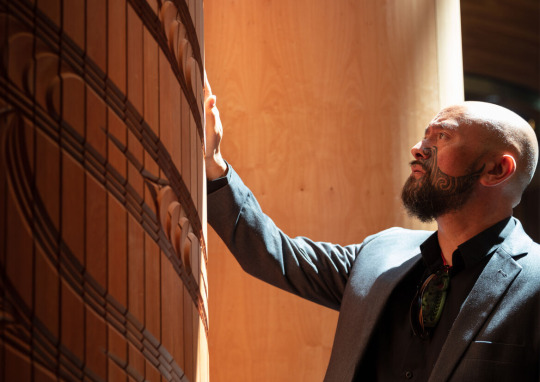
Graham Tipine
Tipe is a tā mocko artist who has been involved in other works such as a consultant and a key artist on civic along with council-led projects through out Tāmaki Makaurau Auckland. His creativity brings Māori kaupapa into the built environment of the city - projects include Victoria Park, Auckland Library and the Tirohanga Whānui bridge in Albany.

Johnson Witehira
Witehira is a designer, artist and academic of Tamahaki. He co-founds both Indigenous Design and Innovation Aotearoa (IDIA) and Waahi Wairua. He is reconised as an expert on Māori design, his practice focuses on how customary Māori knowledge and ways of thinking can be applied in contemporary settings. Witehira has designed a typeface titled 'Māori Typeface' the idea being solely because there has not been any Māori typefaces before this, looking at textbooks or printed pages about Māori topics, it is seen that it is always set to be in helvitica, times new roman etc... he wanted to bring light into this and took matters to his own hands in designing an accessible Māori typeface.
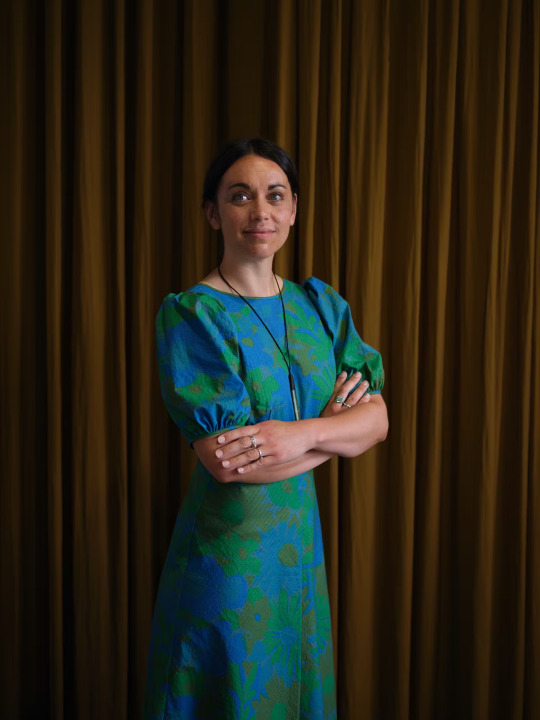
Zoe Black
Black is a deputy director in Objectspace NZ. Working in multiple galleries across NZ for the past eight years being focused on community development and advocating for critically under-represented craft and object artforms - the establishment of her position in Objectspace is an acknowledgement of Black's leadership. Black has always wanted to work with communities and artists.
0 notes
Text
Pohewa Pāhewa: a Māori design kaupapa


Desna Whaanga-Schollum
Her work is connected through the exploration and articulation of cultural identity. She is involved in international indigenous discourse, stakeholder engagement, and Māori Identity design. Desna is the founding member and Chair of Ngā Aho (Māori Design Professionals Inc). She has a background in a wide range of mediums, and all her work is based on Māori frameworks.


Tyrone Ohia
Tyrone is the Creative Director and Founder of Extended Whānau in Auckland. Raised in Whanganui but originally from Tauranga, Tyrone studied Computer Graphic Design at UCOL. In his final year at university Tyrone won a Certificate of Typographic Excellence from the New York Type Directors Club for his degree project efforts. He has created 30 different posters that are now on display on the fences around the construction site of The Hotel Britomart.
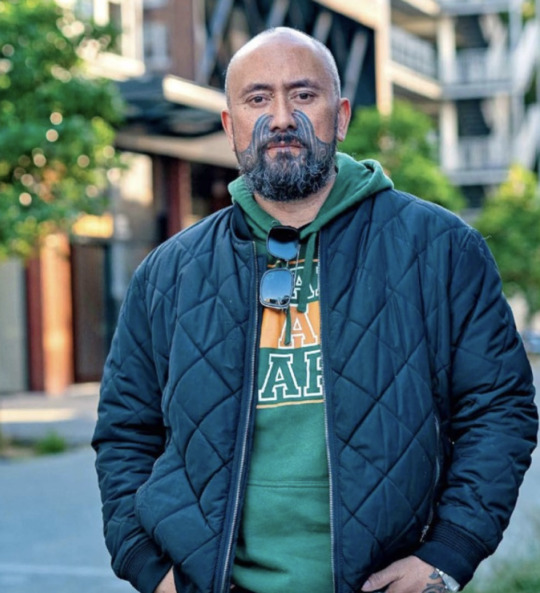

Graham Tipene
Graham always takes a holistic approach to ensuring Māori voices and values underpin his work. His artwork can be found across Tāmaki Makaurau, from the impressive concrete panels in the Waterview Tunnel and Albany’s stunning Tirohanga Whānui walking and cycling bridge, to the Central City Library and Auckland War Memorial Museum. He has been featured in articles for New Zealand Herald and The Big Idea.
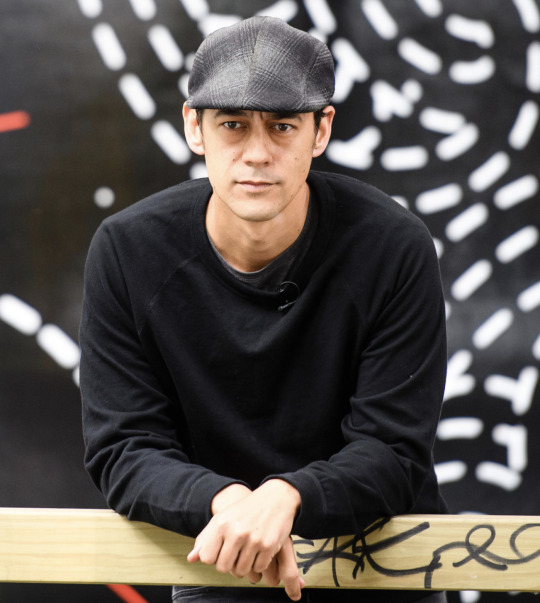

Johnson Witehira
"My kaupapa (mission) as both an artist and designer is to bring Māori visual culture back into the lives of all Māori. This is done through careful consideration of how indigenous culture, design and technology intersect." At the end of 2017 Johnson joined forces with Miriame Barbarich and John Moore to form Indigenous Design and Innovation Aotearoa, which is about designing futures through an indigenous lens.

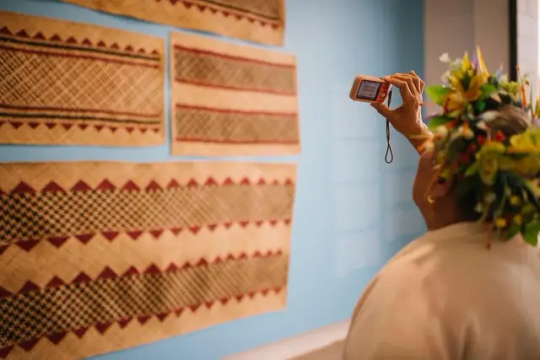
Zoe Black
Zoe Black is the Deputy Director of Objectspace, a public gallery in Aotearoa New Zealand that focuses on craft, architecture and design. Her curatorial practice has focused on community development and advocating for critically under-represented craft and object art forms. She is currently Norwegian Crafts’ Curator in Residence, working on projects that create a dialogue between Indigenous making practices in Aotearoa and Sápmi.
0 notes
Text
SDL - Grad604 Expand your view
Finding Aotearoa creatives, designers and spaces.
“Design Assembly” The home of New Zealand graphic design. Design Assembly loves to profile the breadth and depth of design practice in Aotearoa. For July they’re celebrating Māori design, designers, and illustrators.
Ko Taupiri te maunga, ko Te Puehu o Waikato te moana, ko Waikato te awa, ko Tainui te waka, ko Waikato te iwi, ko Ngāti Tamaoho te hapū, ko Mangatangi te marae, nō Tāmaki Makaurau ahau. Ko Sara Moana tōkū ingoa. Sara discusses how her inspiration and creative journey began when she was studying illustration at Elam, looking into her previous interests of Sculpture and Performance Art. Sara Moana - Freelance illustrator.
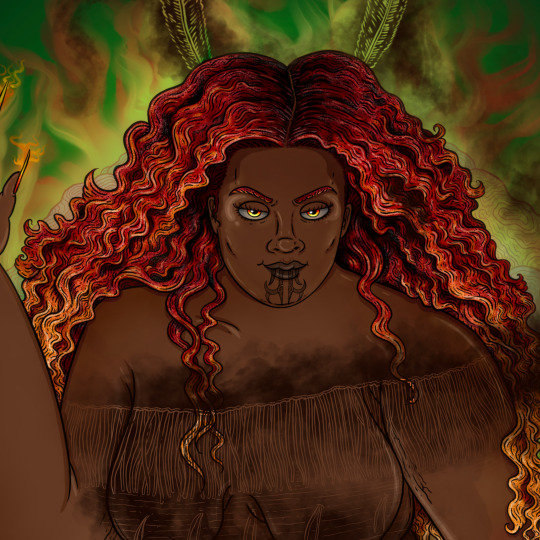
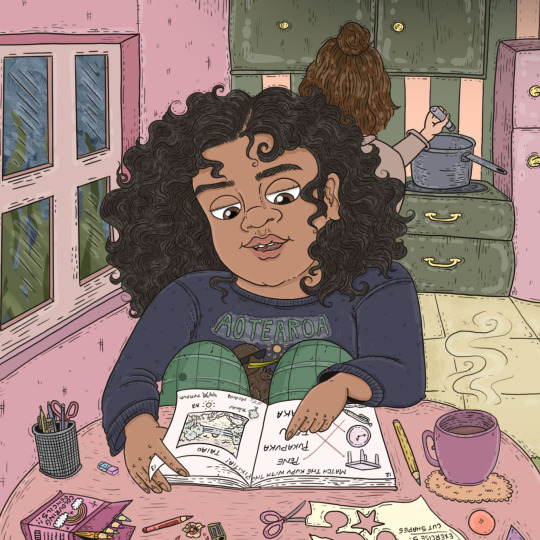
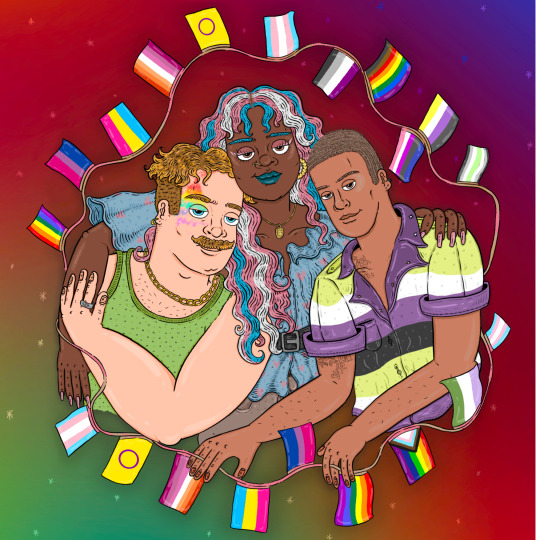
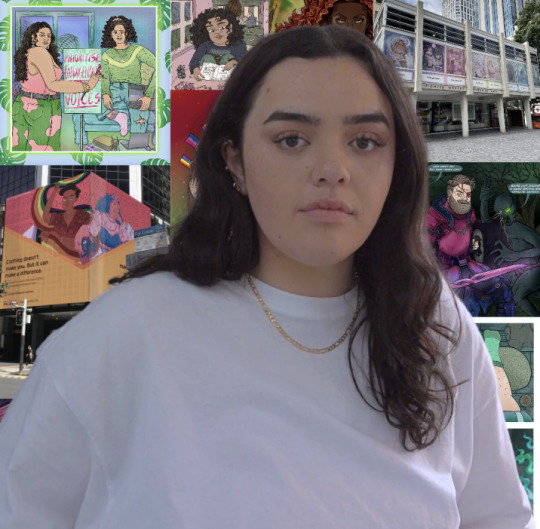
Under the hood with …Nikki Kennedy, Founder of Taputapu He mokopuna ahau nō Te Tairawhiti mai i ngā maunga Hikurangi, Makeo me Maunga Haumi. Ko Ngāti Porou, Te Aitanga a Mahaki me Te Whakatōhea ngā iwi. Ko Nikki Kennedy ahau.
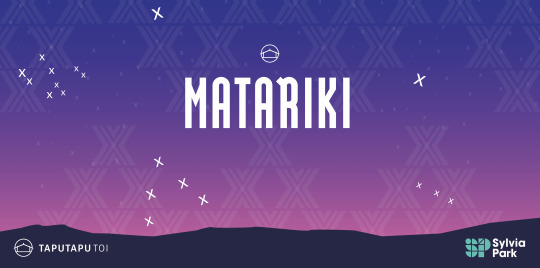
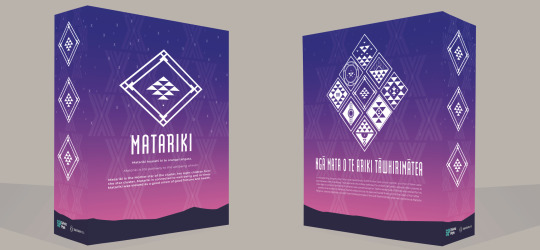
- Aotearoa design and designers showcasing their work in large scale areas such as Sylvia Park mall - showing the large impact and effect that local designers can have.
“Now that the project has finished we will be installing the artwork on Monday 3rd of July and then the public can enjoy our artwork at Sylvia Park. We are working on a variety of brand packages for our clients, that’s our bread and butter mahi. I’m also heading overseas to share about our Matariki artwork at a Thailand Matariki Gala event which is really exciting to be part of. I will be joining other Māori creatives, carvers and fashion designers to talk about how Matariki influences our design mahi and processes etc.
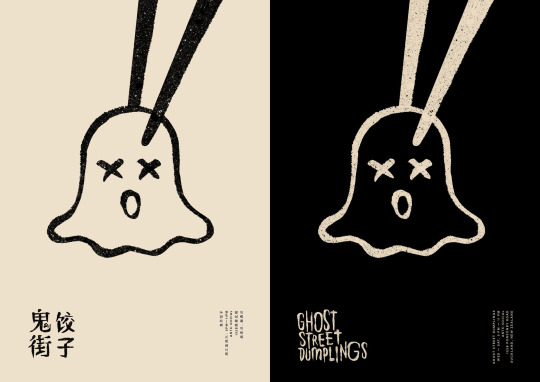
“Based in Auckland, Seachange are an award-winning design and branding studio—they work from digital design to naming and everything in between. Keeping themselves intentionally small doesn’t stop Seachange creating a big impact—their brands stand out for a whole variety of different reasons. One such brand is Ghost Street Dumplings, a pop-up dumpling, which used the company’s name very literally combined with a cute illustration to create a wonderful, memorable brand.” (Seachange, 2023)

“BrandAid is a brand development and design agency based in Dunedin on New Zealand’s South Island. The award-winning agency’s creative director Luke Johnston has over 19 years experience in the industry—and founded BrandAid 15 years ago. They’ve worked with a huge range of clients, including their home city but it was this reusable packaging for Bay Rd Peanut Butter—which employs striking typefaces to make the look as good as it is for the planet.”







Pohewa Pāhewa: a Māori design kaupapa
1 Jul–3 Sep 2023

Desna Whaanga-Schollum Connection through exploration and the articulation of cultural identity. Projects see her collaborating with a wide variety of communities, business and design professionals, artists and academics to achieve results which affect change in people, practice and place. Desna is actively involved in Māori identity design, discourse and stakeholder engagement in Aotearoa, via design consultancy, research, exhibitions, wānanga, speaking engagements and governance roles.

“Graphic design is about having visual conversations with people. In order to have a good conversation I need to look people in the eye, I need to listen, and I need to know a bit about the topic at hand. People are smart, they know when you’re faking a smile, so it pays to put your heart into it as much as possible.” - Tyrone Ohio “People of Britomart”
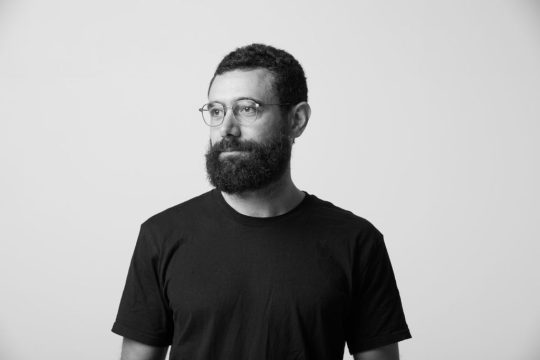
“Graham Tipene (Ngāti Whātua, Ngāti Kahu, Ngāti Hine, Ngāti Haua, Ngāti Manu) is a Tā Moko artist who has been involved as a consultant and key artist on civic and Council-led projects throughout Tāmaki Makaurau Auckland. His public work brings Māori kaupapa into the built environment of the city, with major projects including the Waterview tunnel, Victoria Park, Auckland Library, and Tirohanga Whānui Bridge in Albany.In the latest episode of ‘Cultured Conversations,’ Auckland Art Gallery Director Kirsten Lacy speaks with Graham about Tā Moko and on bringing a Māori lens to civic spaces.”
Johnson Witehira “My kaupapa (mission) as both an artist and designer is to bring Māori visual culture back into the lives of all Māori. This is done through careful consideration of how indigenous culture, design and technology intersect. We once created all the things in our world; the clothes, buildings, vehicles and tools. Nowadays everything is made for us. If we’re lucky we get to decorate. I want to put Māori back in the drivers seat, so we’re active participants in creating the tools and the world we want to live in.”
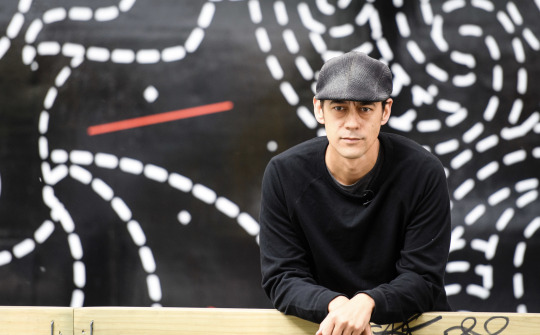
Zoe Black
“Zoe has been with the gallery for two years working across curatorial programming, community development and public programmes. During this time she has made an extraordinary contribution to the organisation, leading Māori programming, alongside extensive work with Moana and migrant communities within a kaupapa of co-leadership. This work now forms a key focus of our exhibition programme.The establishment of this new position is an acknowledgement of Zoe’s leadership, and the expanding work Objectspace continues to undertake nationally. It heralds exciting change for the gallery and their small but mighty team.” Objectspace
0 notes